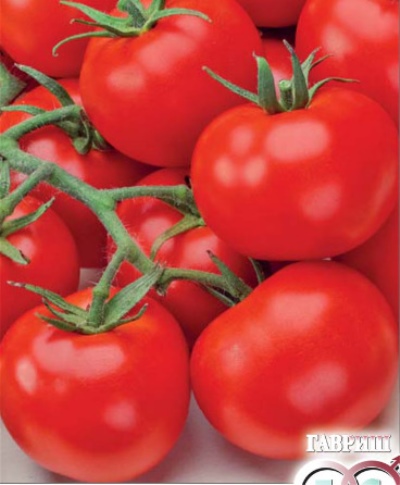
- Authors: V. I. Kozak
- Year of approval: 2007
- Category: grade
- Growth type: determinant
- Appointment: fresh consumption, for whole fruit preservation
- Ripening period: ultra early
- Ripening time, days: 85-105
- Growing conditions: for open ground, for film greenhouses
- Bush size: undersized
- Bush height, cm: up to 55 cm
The fact that the tomato was named Northern Baby does not mean that it will disappoint. You just need to clearly understand what this culture is capable of and what it cannot achieve. And besides a realistic approach to this plant, it is highly recommended to follow strictly agronomic requirements.
Breeding history
The history of the Northern Baby began thanks to the breeder V.I.Kozak. He completed his work a long time ago. The culture was officially registered in Russia in 2007.
Description of the variety
This plant exhibits classic determinant development. Therefore, it does not cause special concerns during cultivation. The height of the bushes does not exceed 0.55 m. They will be strong and spreading. Leaves of medium size vary in color from light green to full green; the presence of a trunk is also characteristic.
The main qualities of the fruit
The earliest fruits range in color from light green to full green. A dark green spot is formed near the stalk. When the tomato is ripe, however, it will definitely turn red. The berries are round in shape and weigh 45-60 g. They are:
covered with a smooth skin;
develop from simple inflorescences;
first appear above 5 or 6 inflorescences;
include an articulated peduncle.
Taste characteristics
The harvested crop is often eaten fresh. But it can also be used in canned whole fruits. The flesh of the Northern baby is moderately firm.
Ripening and fruiting
Such a tomato belongs to the category of especially early crops. Under normal development conditions, it will be necessary to wait 85 to 105 days after the green growth emerges in order to harvest. In specific conditions, however, the situation can be very different. You can remove the fruits in July and in the last third of summer.
Yield
The North Baby's productivity level is not mind-boggling. The crop yields approximately 1.9 kg of berries per 1 m2. However, on the other hand, this result is achieved quite steadily even in places with a difficult climate, and, moreover, at a very early date.
The timing of planting seedlings and planting in the ground
Sowing seeds in containers usually begins in March. But it is not forbidden to do this in the first decade of April. The readiness of seedlings for transshipment into open ground is mainly achieved at the end of May or in the first decade of June.

Growing tomato seedlings is an extremely important process, because it largely depends on whether the gardener can harvest at all. All aspects must be taken into account, from seedbed preparation to planting in the ground.
Landing scheme
Planting on the 500x400 mm system is encouraged. The optimal number of plants per 1 sq. m is up to 5 pieces.But it is better to limit yourself to 4 bushes, and get the best result with less pronounced care.

Growing and caring
Due to its small growth, this variety will not require either the elimination of stepsons or fixation to the supports. Even giving it any special shape is also not required. At some moments, when the load from the crop is high, a garter is still needed, but this is only a short-term need. Seedlings can be cultivated in boxes or small pots. Wells must be thoroughly irrigated before planting.
Adult plants of the Northern baby need to be watered regularly. Stagnation of water in the holes is categorically unacceptable. Watered plantings need to be loosened. Mulching is also an important measure. It is worth resorting to not only to protect against desiccation, but also to fight the heat.




A plant needs different micronutrients at each stage of growth. All fertilizers can be divided into two groups: mineral and organic. Folk remedies are often used: iodine, yeast, bird droppings, eggshells.
It is important to observe the rate and period of feeding. This also applies to folk remedies and organic fertilizers.
Disease and pest resistance
Such a formidable pathology as late blight is not terrible due to early maturation. Top rot of tomatoes also poses almost no threat to the plantings of the Northern baby. However, it is necessary to take into account the likelihood of other pathologies and attacks of insect pests. Protection against them is carried out by standard methods.


Resistant to adverse weather conditions
Excellent cold resistance of this variety is declared. But the official description does not describe its resistance to hot, dry weather. Protection against damage by changes in meteorological conditions is also not described.
Growing regions
Traditionally, for different varieties of tomatoes, the Northern Baby can be advised to gardeners:
The Urals and the Far East;
northwest Russia and the North Caucasus;
Chernozem and Volga regions;
Siberia and the center of the European part.

























































































